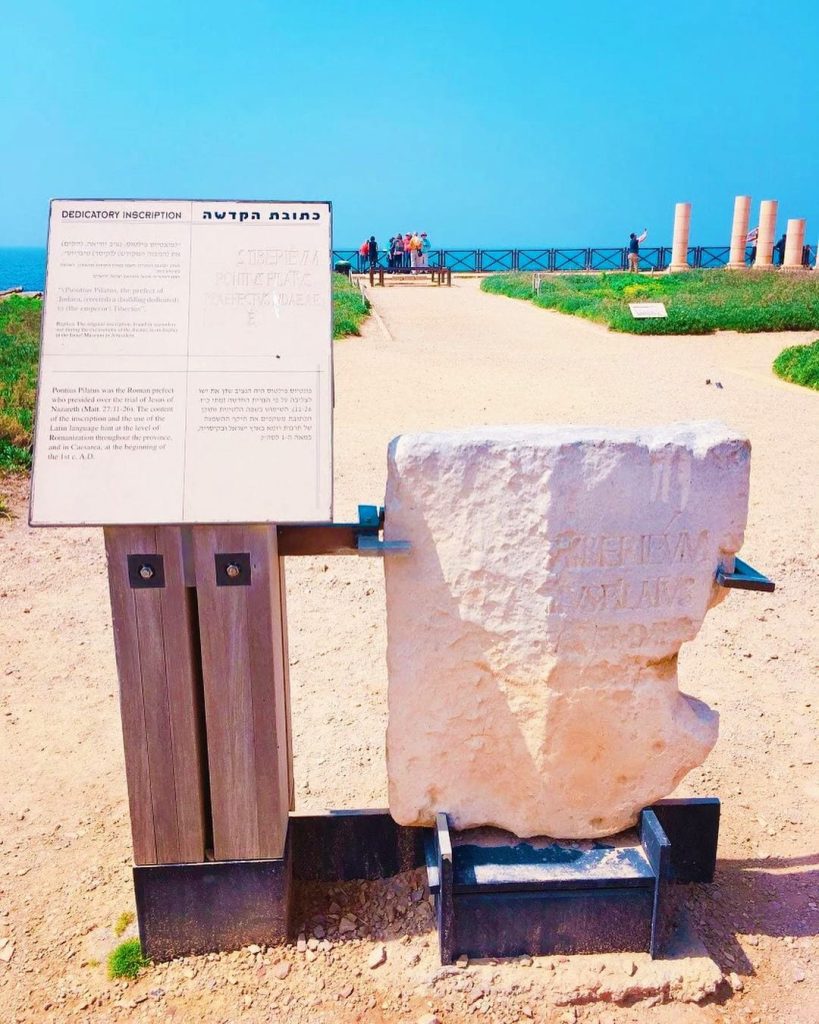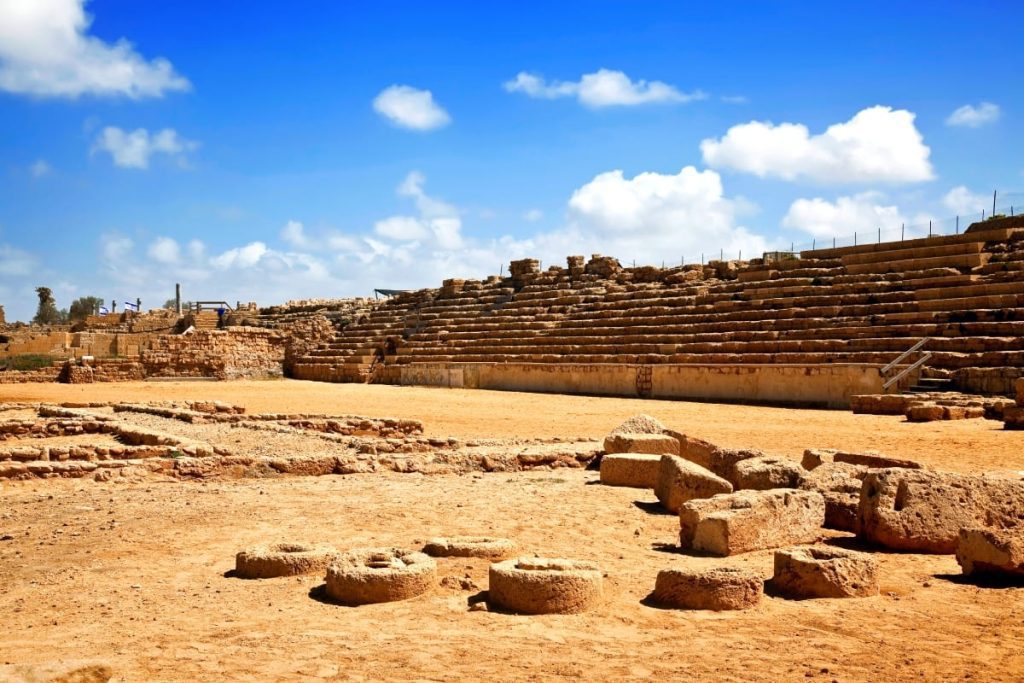When Judea becomes a Roman province in 6 CE, Caesarea Maritima replaces Jerusalem as its civilian and military capital and becomes the official residence of its governors. For example, the Roman procurator Antonius Felix; and prefect Pontius Pilatus. In the 3rd century, Jewish sages exempted the city from Jewish law; as by this time, the majority of the inhabitants were non-Jewish. The city was chiefly a commercial center relying on trade.
In fact, Caesarea Maritima is the location of the 1961 discovery of the Pilate Stone; the only archaeological item that mentions the Roman prefect Pontius Pilate; by whose order Jesus was crucified. It is likely that Pilate used it as a base and only went to Jerusalem when needed.
Roman City Caesarea Maritima According to Josephus
So the city was described in detail by the 1st-century Roman Jewish historian Flavius Josephus. Josephus describes the harbor as being as large as the one at Piraeus; the major harbor of Athens. Remains of the principal buildings erected by Herod as well as the medieval town are still visible today; including the Crusader city; the city walls, the ruined citadel surrounded by the sea, and remains of the cathedral and a second church. Herod’s Caesarea grew rapidly; in time becoming the largest city in Judaea; with an estimated population of 125,000 over an urban area of 3.7 square kilometers (1.4 sq mi).
According to Josephus, Caesarea was the scene in 26 CE of a major act of civil disobedience to protest against Pilate’s order to plant eagle standards on the Temple Mount of Jerusalem. Emperor Vespasian raised its status to that of a Colonia; with the name Colonia Prima Flavia Augusta Caesarea.
According to Josephus, the outbreak of the Jewish revolt of 66 CE was provoked by Greeks of a certain merchant house in Caesarea sacrificing birds in front of a local synagogue. In 70 CE, after the Jewish revolt was suppressed, games were held there to celebrate the victory of Titus. Many Jewish captives were brought to Caesarea Maritima; Josephus claims that 2,500 captives were “slaughtered in gladiatorial games” at the Hippdrome.
Furthermore, in 6 CE Caesarea became the provincial capital of the Judaea Province; before the change of name to Syria Palaestina in 135, in the aftermath of the Bar Kokhba revolt. Caesarea was one of four Roman colonies for veterans in the Syria-Phoenicia region. Caesarea is mentioned in the 3rd-century Mosaic of Rehob, with respect to its non-Jewish population.



